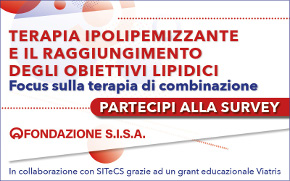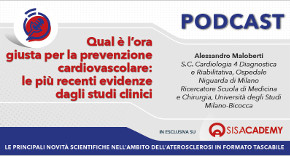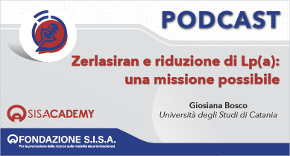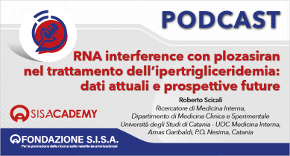 Rivista in lingua italiana
Rivista in lingua italiana
riservata ai Soci SISA
Ultimo numero:
Anno 16 • N.1/2025
Abstract
Bacterial endotoxin activity in human serum is associated with dyslipidemia, insulin resistance, obesity, and chronic inflammation
Lassenius MI, Pietiläinen KH, Kaartinen K, Pussinen PJ, Syrjänen J, Forsblom C, Pörsti I, Rissanen A, Kaprio J, Mustonen J, Groop PH, Lehto M.
Diabetes Care 2011;34:1809-15
OBJECTIVE: To investigate whether bacterial lipopolysaccharide (LPS) activity in human serum is associated with the components of the metabolic syndrome (MetS) in type 1 diabetic patients with various degrees of kidney disease and patients with IgA glomerulonephritis (IgAGN).
RESEARCH DESIGN AND METHODS: Serum LPS activity was determined with the Limulus Amoebocyte Lysate chromogenic end point assay in type 1 diabetic patients with a normal albumin excretion rate (n = 587), microalbuminuria (n = 144), macroalbuminuria (n = 173); patients with IgAGN (n = 98); and in nondiabetic control subjects (n = 345). The relationships of the LPS/HDL ratio and MetS-associated variables were evaluated with Pearson correlation.
RESULTS: The MetS was more prevalent in type 1 diabetic patients (48%) than in patients with IgAGN (15%). Diabetic patients with macroalbuminuria had a significantly higher serum LPS/HDL ratio than patients with IgAGN. In the normoalbuminuric type 1 diabetic group, patients in the highest LPS/HDL quartile were diagnosed as having the MetS three times more frequently than patients in the lowest quartile (69 vs. 22%; P < 0.001). High LPS activity was associated with higher serum triglyceride concentration, earlier onset of diabetes, increased diastolic blood pressure, and elevated urinary excretion of monocyte chemoattractant protein-1.
CONCLUSIONS: High serum LPS activity is strongly associated with the components of the MetS. Diabetic patients with kidney disease seem to be more susceptible to metabolic endotoxemia than patients with IgAGN. Bacterial endotoxins may thus play an important role in the development of the metabolic and vascular abnormalities commonly seen in obesity and diabetes-related diseases.

Area Soci
Eventi
39° Congresso Nazionale
 39° Congresso Nazionale
39° Congresso NazionaleRoma, 23-25 novembre 2025
Save the date




 Spring Meeting Gruppi Giovani SID, SIGG, SIIA, SIMI, SIPREC, SISA
Spring Meeting Gruppi Giovani SID, SIGG, SIIA, SIMI, SIPREC, SISARimini, 6-8 aprile 2025
[continua a leggere]
 SISA LIPID ACADEMY - Corso avanzato di lipidologia clinica
SISA LIPID ACADEMY - Corso avanzato di lipidologia clinicaModena, 4-5 Luglio 2024
[continua a leggere]Giornale Italiano Arteriosclerosi
HoFH today
 Rivista Italiana della
Rivista Italiana della
Ipercolesterolemia
Familiare Omozigote
Anno 6 • N.1/2024
Rivista NMCD
Diateca
[continua a leggere]
[continua a leggere]
Newsletter
il vostro indirizzo di posta elettronica
Progetto LIPIGEN

Nuovo sito dedicato al Progetto LIPIGEN
Progetto LIPIGEN - Vecchio portale
E' necessario essere loggati come utente
Lipigen per poter accedere alla pagina
PROject Statin Intolerance SISA
PROSISA – PROject Statin Intolerance SISA
E' necessario essere loggati come utente
PROSISA per poter accedere alla pagina
GILA - Lipoprotein Aferesi
Gruppo Interdisciplinare Lipoprotein Aferesi
(Accesso Gruppo GILA-Lipoprotein Aferesi)
E' necessario essere loggati come utente del Gruppo GILA per poter accedere
Gruppo Interdisciplinare Lipoprotein Aferesi
(Documentazione ad accesso libero)
Pagina informativa per medici e pazienti










